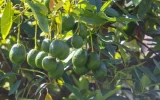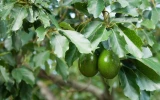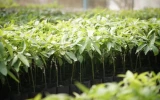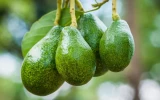Average Avocado Yield per Tree (What to Expect)
Different avocado varieties can produce varying amounts of fruit per year. Additionally, young avocado trees typically produce fewer fruits than mature trees. In this article, we'll help you find out the average yield you can expect from a single avocado tree and the factors that affect it.
A mature avocado tree can yield between 60 and 200 lbs. of fruit per year. The Hass avocado tree is one of the most productive varieties and typically yields between 150 and 300 lbs. The Fuerte avocado tree, on the other hand, can yield between 60 and 200 lbs.
Avocado trees can live up to 50 years or more, but they typically reach their peak productivity between 10 and 20 years of age. Let's take a closer look at how the age of the trees affects their fruit production potential.
Projecting avocado yield per tree provides targets for productive tree performance in business plans for starting an avocado farm from scratch.
Summary
- Hass avocados have a higher average yield per tree compared to other varieties due to their consistent fruit production throughout the year, longer harvesting season, adaptability to different climates, and high demand for their high-quality fruit.
- Varieties such as Fuerte, Reed, and Bacon typically have lower average yields per tree due to factors such as irregular fruit production cycles, shorter harvesting seasons, larger individual fruit sizes impacting total yield, alternate bearing patterns, and smaller tree sizes.
- Young avocado trees generally have limited annual yields due to factors such as immature root systems, limited energy allocation towards fruit production, a lack of full maturity in flowering and fruiting, and increased susceptibility to environmental stress.
- Mature avocado trees experience a significant increase in annual yield attributed to factors such as expanded canopy size, improved root systems for efficient nutrient absorption, enhanced flowering and pollination, greater disease resistance, and improved environmental adaptation.
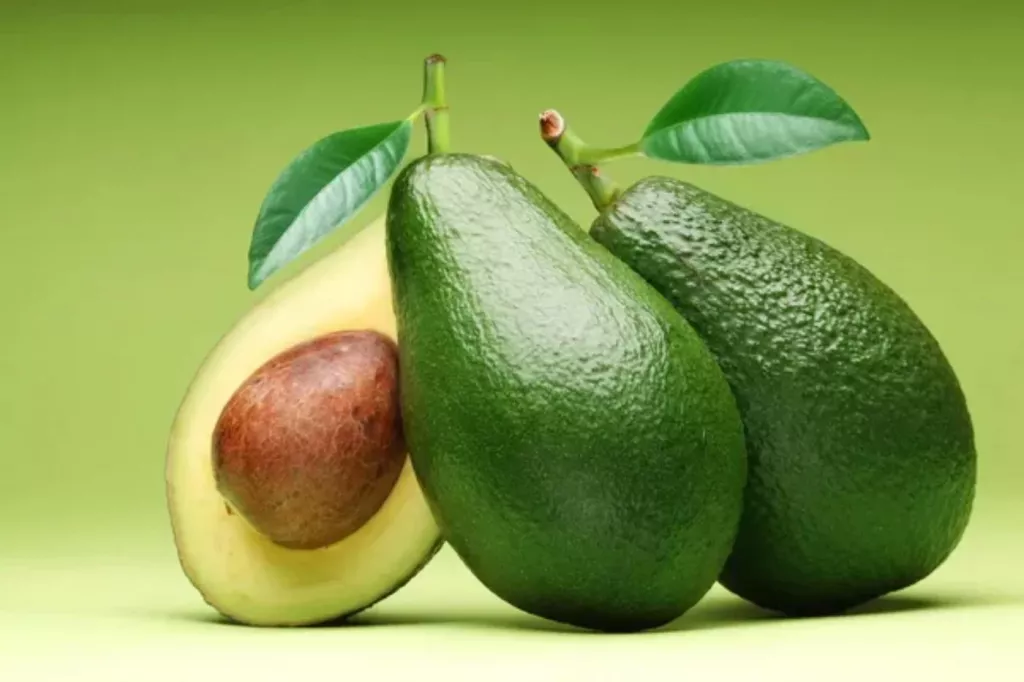
On this page:
Average Avocado Yield per Tree Based on Variety
Below is a table showcasing the average avocado yield per tree based on variety:
| Avocado Variety | Estimated Annual Yield Per Tree (in lbs) |
|---|---|
| Hass | 150-300 |
| Fuerte | 60-200 |
| Reed | 80-220 |
| Bacon | 70-180 |
Hass avocados are renowned for their high yield per tree
Hass avocado trees are known for their ability to bear fruit consistently throughout the year, starting at 3-4 years after planting.
This means that the trees can produce avocados in multiple cycles, leading to a higher overall yield compared to varieties that have a more limited fruit-bearing season.
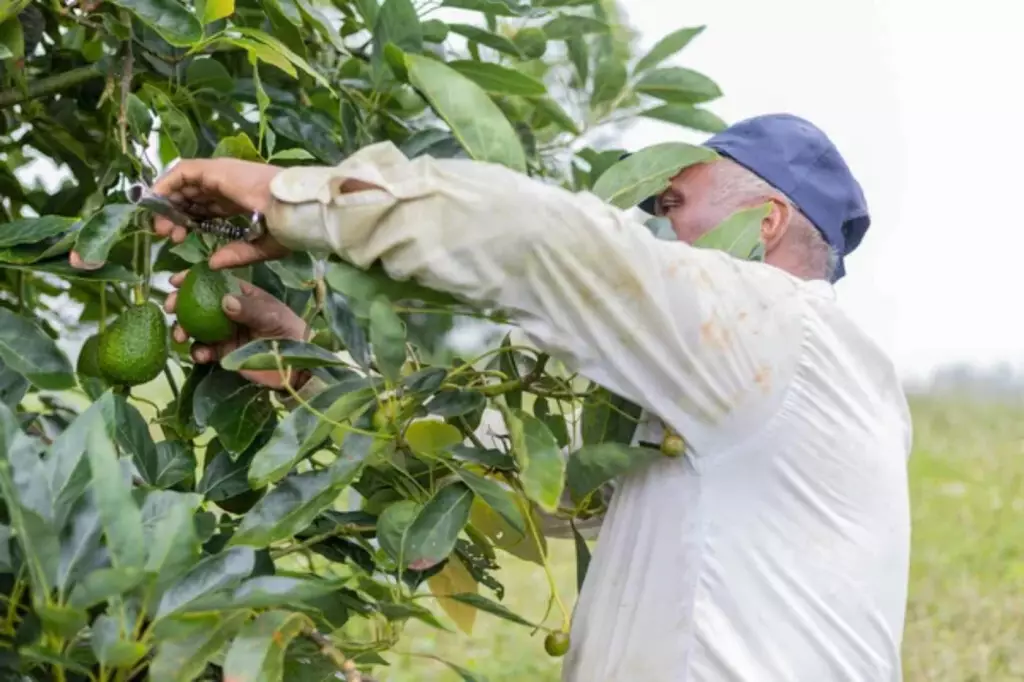
Their harvesting season is relatively long, typically extending from late winter to early fall. This extended period allows for a more gradual and continuous harvest, maximizing the yield per tree.
Aside from this, Hass avocado trees are also adaptable to a wide range of climates, making them suitable for cultivation in different regions. This adaptability allows for greater geographical distribution and the potential for higher yields in diverse environmental conditions.
The fruits are known for their excellent taste, creamy texture, and longer shelf life compared to some other avocado varieties. This high-quality fruit is in high demand, which can drive increased production and yield per tree.
The Fuerte variety typically has a lower yield per tree
Fuerte avocado trees are known for their alternate bearing habit, which means they have irregular fruit production cycles. In some years, the tree may produce a large crop, while in other years, the yield may be significantly lower.
The harvesting season for Fuerte avocados is also often shorter compared to Hass avocados. This limited window for harvesting results in a more concentrated yield over a shorter period, leading to a lower overall annual yield per tree.
This variety is also more susceptible to environmental stress and fluctuations, which can impact their fruit production. While Fuerte avocados are valued for their rich, creamy texture and flavor, they may have a slightly shorter shelf life compared to Hass avocados.
The Reed variety of avocados may have a lower yield per tree compared to the Hass variety
Reed avocados are known for their large size, which can impact the overall yield per tree. While the individual fruit size is larger, the total number of avocados produced per tree may be lower compared to smaller-sized varieties, ultimately affecting the annual yield.
The harvesting season is also relatively shorter compared to Hass avocados. A more limited window for harvesting can result in a concentrated yield over a specific period, potentially leading to a lower overall annual yield per tree.
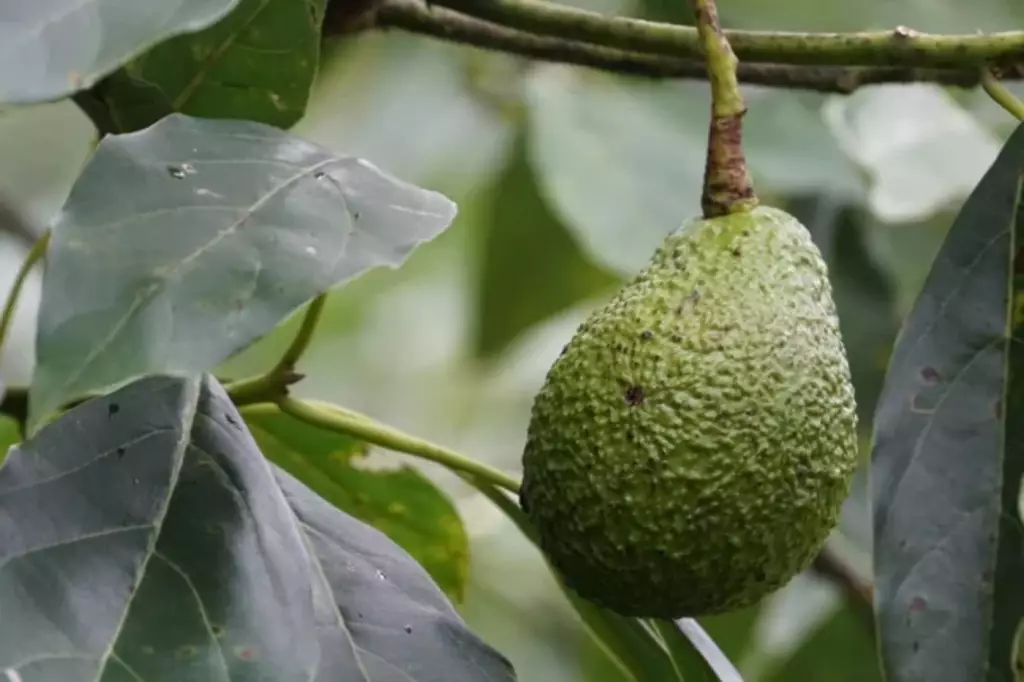
Reed avocado trees also tend to be larger and more spreading compared to the compact, upright growth of Hass trees. This means that Reed trees require more space to grow, resulting in fewer trees per acre and ultimately a lower overall yield.
Additionally, Reed avocados often have a longer maturation period than the Hass variety. This means that the fruit takes longer to reach maturity and be ready for harvest, further impacting the overall yield per tree.
Bacon avocados are known to have the least yield per tree
Bacon avocado trees are known for their alternate bearing pattern, which means they produce a heavy crop one year and a lighter crop the following year. This natural cycle can significantly reduce the average annual yield per tree.
The tree itself also tends to be smaller in size compared to other avocado tree varieties. This means that there are fewer fruits produced per tree.
Additionally, the Bacon avocado tree may not be as prolific in terms of fruit production as other varieties, leading to a lower overall yield.
Average Avocado Yield per Tree Depending on Tree Age
The table below shows how the age of an avocado tree significantly affects its estimated yield per tree:
| Age of Avocado Tree | Age Range | Estimated Annual Yield (lbs) |
|---|---|---|
| Young | 1-9 years | 0-200 |
| Mature | 10-20 years | 200-300 |
| Old | 20+ years | 200-700 |
Estimated yield from young avocado trees
Young avocado trees typically produce less fruit compared to mature trees due to several factors related to their growth and development. These factors include the following:
They still have immature root systems
Young avocado trees are in the process of establishing their root systems, which are essential for nutrient uptake and water absorption. Limited root development can restrict the tree's ability to support a large fruit crop.
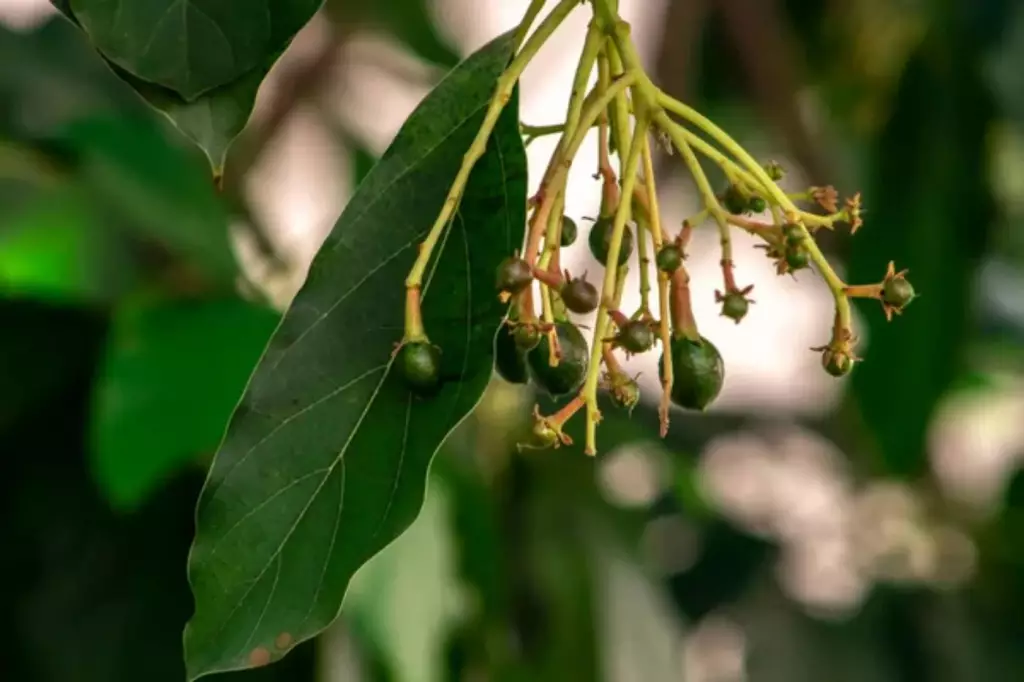
They have limited energy allocation
Young trees prioritize allocating energy towards growth and development, including root and canopy expansion, rather than extensive fruit production. As a result, their capacity for fruiting is naturally limited during the early stages of growth.
They haven't reached the flowering and fruiting stage
Avocado trees generally take several years to reach full maturity and begin consistent fruit production. Young trees may not have fully developed flowering and fruiting structures, leading to lower fruit set and yield.
They are more susceptible to environmental stress:
Young trees are more susceptible to environmental stressors, such as extreme temperatures, drought, or nutrient deficiencies, which can impact their ability to set and retain fruit.
Estimated yield from mature avocado trees
Once avocado trees reach maturity, typically between 10 to 20 years of age, they enter a stage where their yield potential increases significantly.
As avocado trees mature, they undergo physiological changes that contribute to higher fruit production. Here are some reasons why mature avocado trees have a significantly increased yield per tree ranging from 200 to 300 pounds per tree:
They have larger canopy size
As avocado trees mature, their canopy size expands, allowing them to support a larger number of fruit. A larger canopy means more photosynthetic surface area, which leads to increased energy production and greater fruit development.
They have a more enhanced root system
Mature avocado trees develop a well-established root system that enables them to efficiently absorb water and nutrients from the soil. This robust root system supports the tree's overall health and contributes to higher fruit yield.
They have a more improved flowering and pollination
Mature avocado trees tend to produce more flowers, leading to a greater potential for fruit set. Additionally, as the trees mature, they are more likely to attract pollinators such as bees, which can enhance the pollination process and result in a higher fruit yield.
They have enhanced disease resistance
Mature avocado trees often exhibit greater resistance to pests and diseases, reducing the likelihood of crop loss and enabling more consistent and abundant fruit production.
They have improved environmental adaptation
Over time, avocado trees become better adapted to their specific growing conditions, which can lead to more consistent and reliable fruit production. This adaptation includes better tolerance to environmental stressors such as temperature fluctuations and drought.
Estimated yield from old avocado trees
Avocado trees that have surpassed the 20-year mark are considered old, although they can live up to 200-400 years. While these trees continue to produce fruit, their yield may become more variable.
Older avocado trees generally have larger canopies and more extensive root systems, which can support a higher yield of fruit compared to younger trees.
Older trees also have had more time to establish themselves in the soil, allowing for better nutrient uptake and overall health, which contributes to increased fruit production.
Furthermore, as avocado trees age, they often exhibit a more consistent and abundant fruiting pattern, leading to higher yields.
Challenges and Solutions in Avocado Production
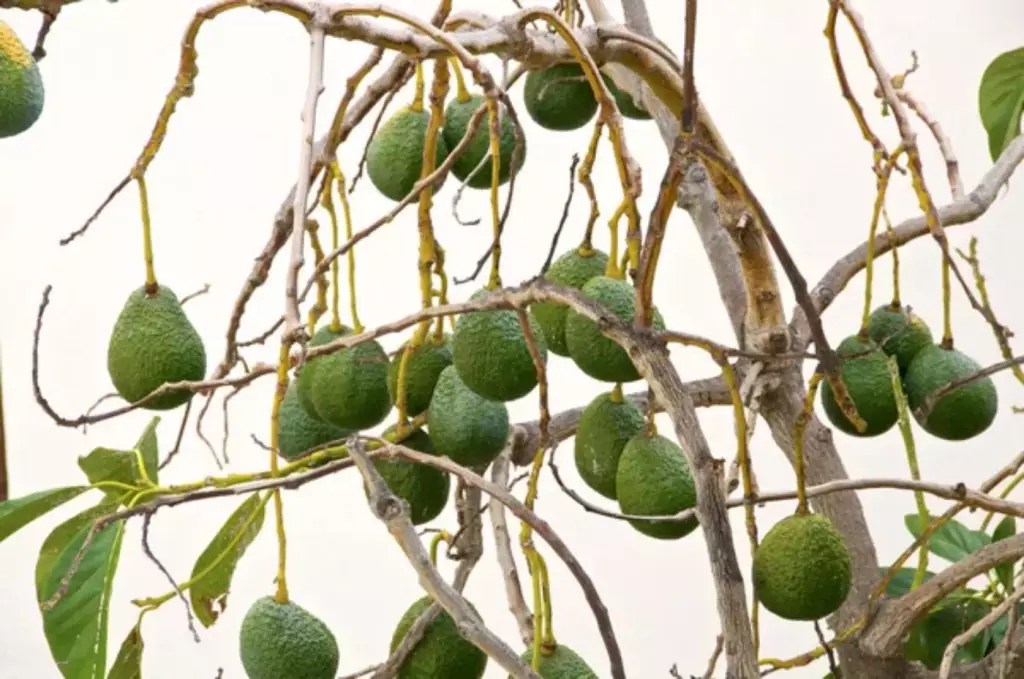
Typical yields per tree and per hectare of avocados can provide valuable benchmarks and productivity targets to consider when developing financial forecasts and orchard design plans.
In this section, we will discuss some of the common challenges faced by avocado growers and the solutions to overcome them:
Dealing with environmental stress
Avocado trees are sensitive to environmental stress, which can lead to a decrease in yield. The stress can be caused by factors such as drought, extreme temperatures, and high winds.
To overcome this challenge, you should provide your trees with adequate water and nutrients. You can also use mulch to retain moisture in the soil and protect the roots from extreme temperatures. Additionally, you can use shade cloth to protect the trees from strong winds and excessive sunlight.
Managing alternate bearing
Alternate bearing is a phenomenon where avocado trees produce a large crop one year and a small crop the next year. This can be frustrating for growers as it affects their income.
To manage alternate bearing, you should thin the crop in the heavy years to reduce the load on the tree and promote consistent cropping. You can also use plant growth regulators to regulate the flowering and fruiting cycles of the tree.
Controlling root rot
Root rot is a fungal disease that affects the roots of avocado trees and can lead to a decrease in yield or even death of the tree. To control root rot, you should ensure that the soil is well-drained and not waterlogged.
You can also use fungicides to prevent the spread of the disease. Additionally, try to avoid planting avocado trees in areas where the disease has previously occurred.
